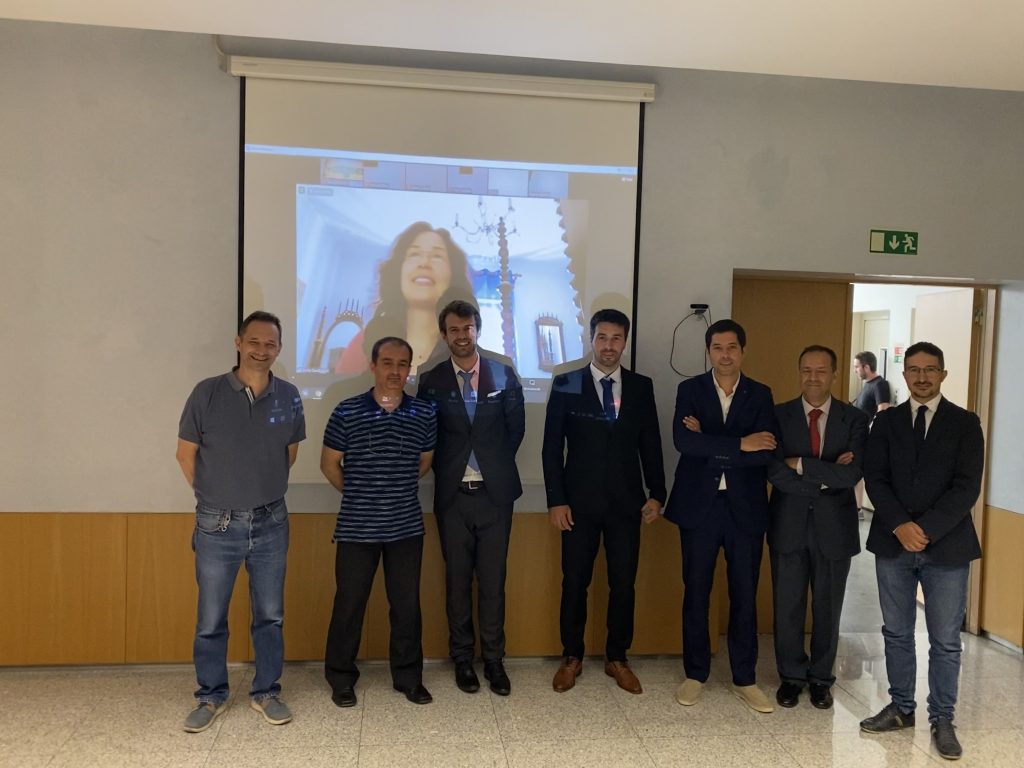Nelson Pereira finaliza o seu Doutoramento
Tema da Tese: ‘Development of multifunctional inks for the implementation of interactive applications’
Autor: Nelson Miguel Macedo da Silva Pereira
Orientadores: Vitor Manuel Correia; Senentxu Lanceros-Méndez
Data: 22/07/2022
Programa Doutoral: Instrumentação e Microssistemas Eletrónicos
Abstract
The rise of printing technologies allied to the field of functional materials, is leading to low cost, flexible, easy integrable devices with customizable electrical responses. With the fast progress of the Internet of Things, the demand of advanced functional materials in combination with printed techniques will open new possibilities in the field of printed electronics. The production of multifunctional inks by combination of polymer matrices with fillers, allows to tailor the electric response of the composites enabling effects that can be used in applications including pressure, touch, magnetic and environmental sensors, radio-frequency identification, actuators, and energy storage elements.
In this context the main objective of this work is the development of multifunctional inks for implementation in interactive applications, taking into consideration environmental issues and additive manufacturing technologies. For this purpose, six applications have been developed based on novel materials compatible with additive manufacturing technologies using inks based on natural polymers and ionic liquids as active material.
A UV curable polyurethane acrylate (PUA) and Indium Tin Oxide (ITO) composite with high dielectric constant (33) has been used for capacitive sensing applications. A fully functional magnetic actuator based on silk fibroin and cobalt ferrite demonstrates that it is possible to develop magnetically responsive actuators based on natural polymers to produce a new generation of environmentally friendly multifunctional materials.
To reduce the influence of particle fillers in the design of functional materials a series of applications were developed using ionic liquids, also known as “green solvents”. A transparent flexible pressure sensor was developed based on an elastomer styrene-ethylene-butylene-styrene (SEBS) containing 20 wt.% of the ionic liquid [Bmim][N(CN2)]. The sensor shows a pressure sensitivity of approximately 25 kΩ·N-1. [Bmim][FeCl4] and PVDF was used for the development of humidity sensors with a sensing range of 35 to 90% RH. A soft actuator was fabricated by direct writing, for application as a microgripper, based on [Bmim][SCN]/PVDF composites.
Finally, a smart label fabricated by screen printing with integrated humidity sensor and printed battery was developed, including detection, communication, control, and energy subsystems.
Thus, the present work demonstrates the relevance of advanced multifunctional materials compatible with additive manufacturing technologies for the next generation of printed electronics solutions.
Keywords: internet of things; multifunctional materials; printed electronics; printing.




